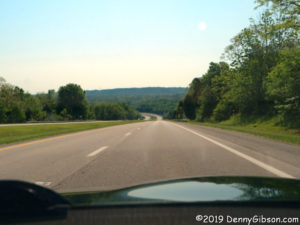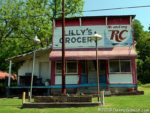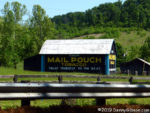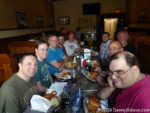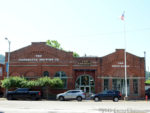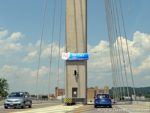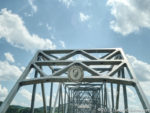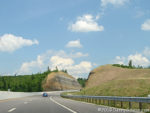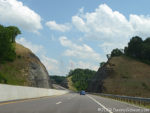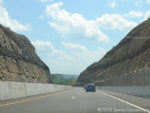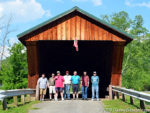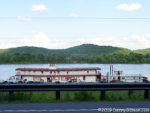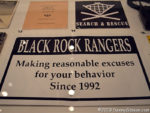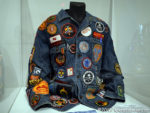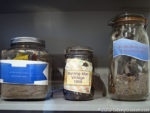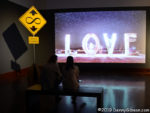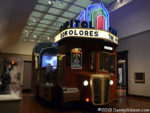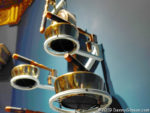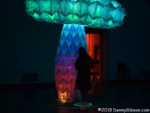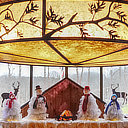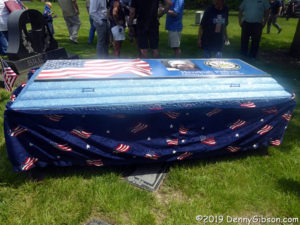 I know the difference between Memorial Day and Veterans Day and I’ve sometimes been critical of those who don’t. The publication date for this article is the day before Memorial Day which means it’s my official Memorial Weekend post. The article’s primary focus is the funeral of a U.S. Army veteran who died peacefully at the age of ninety. He clearly does not fit the definition of the folks that Memorial Day was created to honor. On one hand, I’m not completely comfortable having the subject of my Memorial Weekend post be someone who should not be connected to the holiday in any way at all. On the other hand, there’s a very good chance that I would not have attended Hezekiah Perkins’ funeral if it did not take place during Memorial Weekend. That statement is quite possibly true of almost everyone who did attend his funeral on Saturday.
I know the difference between Memorial Day and Veterans Day and I’ve sometimes been critical of those who don’t. The publication date for this article is the day before Memorial Day which means it’s my official Memorial Weekend post. The article’s primary focus is the funeral of a U.S. Army veteran who died peacefully at the age of ninety. He clearly does not fit the definition of the folks that Memorial Day was created to honor. On one hand, I’m not completely comfortable having the subject of my Memorial Weekend post be someone who should not be connected to the holiday in any way at all. On the other hand, there’s a very good chance that I would not have attended Hezekiah Perkins’ funeral if it did not take place during Memorial Weekend. That statement is quite possibly true of almost everyone who did attend his funeral on Saturday.
I first saw his name on Friday afternoon. I’d been looking for Memorial Day related activities when local news sources posted a story from Spring Grove Cemetery. The Korean War veteran had purchased a plot and paid for his funeral twenty years ago. Arrangements were progressing to assure that the ceremonies included military honors. There was no question about a proper funeral and burial taking place; There was a big question about who would attend. None of Perkins’ family lived close enough or were healthy enough to come. The cemetery was asking people to join their employees and a small detachment of soldiers in saying a final farewell.
 The response was impressive and heartwarming. I arrived about fifteen minutes before the scheduled ceremony and had to park roughly half a mile away. Others parked much farther away than that. Not only was the crowd large, it was racially and generationally diverse. As might be expected, the largest single category was definitely military veterans
The response was impressive and heartwarming. I arrived about fifteen minutes before the scheduled ceremony and had to park roughly half a mile away. Others parked much farther away than that. Not only was the crowd large, it was racially and generationally diverse. As might be expected, the largest single category was definitely military veterans
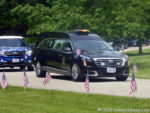

 Many of those veterans arrived on motorcycles in parade formation. My unscientific guess is that somewhere between fifty and a hundred motorcycles rolled by the grave site. The motorcycles were parked and their riders walked back to where the hearse that had followed them now stood. Friday’s announcement had said the Spring Grove employees would act as pallbearers but that was very much unnecessary. That chore was quite willingly handled by a pre-selected group of motorcyclists.
Many of those veterans arrived on motorcycles in parade formation. My unscientific guess is that somewhere between fifty and a hundred motorcycles rolled by the grave site. The motorcycles were parked and their riders walked back to where the hearse that had followed them now stood. Friday’s announcement had said the Spring Grove employees would act as pallbearers but that was very much unnecessary. That chore was quite willingly handled by a pre-selected group of motorcyclists.

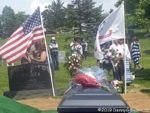 The ceremonies were brief but meaningful. A detail from Fort Knox removed and folded the flag that covered the coffin. Although the word “thousands” has slipped into a headline or two, most references to the crowd say “hundreds”. My own guess as to crowd size, made while I was part of it, is 400-500. A few, such as workers at the nursing home where he lived most recently, actually knew Hezekiah Perkins but the vast majority were complete strangers. There is certainly no reason to get too puffed up about standing in the grass for a few minutes on a nice spring day, but it’s an unquestionably nice thing that so many Cincinnatians did just that and made that final farewell quite a bit louder than it would have been otherwise.
The ceremonies were brief but meaningful. A detail from Fort Knox removed and folded the flag that covered the coffin. Although the word “thousands” has slipped into a headline or two, most references to the crowd say “hundreds”. My own guess as to crowd size, made while I was part of it, is 400-500. A few, such as workers at the nursing home where he lived most recently, actually knew Hezekiah Perkins but the vast majority were complete strangers. There is certainly no reason to get too puffed up about standing in the grass for a few minutes on a nice spring day, but it’s an unquestionably nice thing that so many Cincinnatians did just that and made that final farewell quite a bit louder than it would have been otherwise.
 The Spring Grove visit occurred in the afternoon. I started the day with the Butrims and breakfast at the Anchor Grill followed by traipsing around my favorite bridge. A previous visit had left the couple firmly split on Cincinnati chili but I got a 2-0 favorable vote on goetta. We have been digital friends for a while but this was our first meeting in the analog world. The visit came in the middle of a Kentucky focused trip which, like all of their many road trips, is being reported semi-realtime on Facebook. See Anna’s version here and Joe’s here.
The Spring Grove visit occurred in the afternoon. I started the day with the Butrims and breakfast at the Anchor Grill followed by traipsing around my favorite bridge. A previous visit had left the couple firmly split on Cincinnati chili but I got a 2-0 favorable vote on goetta. We have been digital friends for a while but this was our first meeting in the analog world. The visit came in the middle of a Kentucky focused trip which, like all of their many road trips, is being reported semi-realtime on Facebook. See Anna’s version here and Joe’s here.

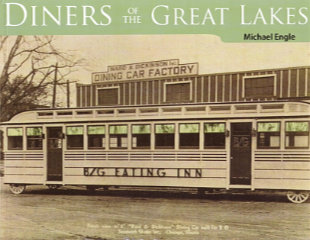 My original notion of what’s inside Diners of the Great Lakes was not very accurate, but I’m not the least bit disappointed. For no particular reason, I more or less expected this book to be something akin to a directory of diners currently existing in the Great Lakes region along with a telling of their individual histories. There is a certain amount of that, but it comes late in the book after Engle has delivered not just the history of diner operation in the region but of the manufacture of diners there along with their development as something distinct from what occurred nearer the Atlantic.
My original notion of what’s inside Diners of the Great Lakes was not very accurate, but I’m not the least bit disappointed. For no particular reason, I more or less expected this book to be something akin to a directory of diners currently existing in the Great Lakes region along with a telling of their individual histories. There is a certain amount of that, but it comes late in the book after Engle has delivered not just the history of diner operation in the region but of the manufacture of diners there along with their development as something distinct from what occurred nearer the Atlantic.